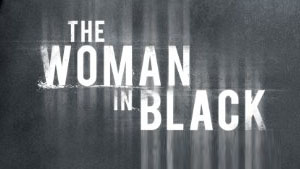
Editor’s Note: Go,See,Talk presents this review of The Woman In Black from our guest contributing writer Bill Graham. Have a look at what he had to say about the Daniel Radcliffe’s eerie post-Potter film and offer your thoughts below.
“Is that all they’ve got?” That’s what I wondered as I sat through Daniel Radcliffe’s first foray onto the big screen since the conclusion of the Harry Potter film franchise with The Woman In Black. He went from dark adventure fantasy to Victorian-era Gothic horror that simply throws jump scare after jump scare at you in the hopes of getting a reaction. For many of the teenage girls in the audience—perhaps fans of Potter—it worked. I can’t say the same for myself. Take out the jump scares and stick with the intriguing premise, interesting characters, and a wickedly haunting setting and you have the trappings of a solid horror film.
Arthur Kipps (Radcliffe) is left to raise his young boy (a great deadpanning Misha Handley) on his own after his wife’s death during 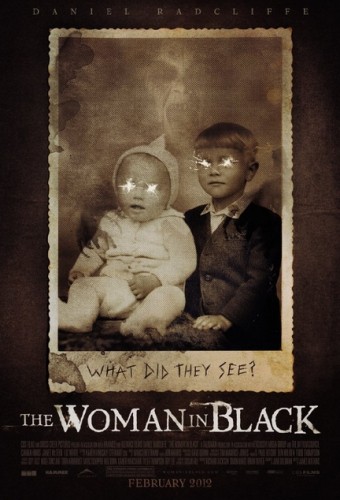 childbirth. Whether that led to the financial ruin Mr. Kipps is currently in is unknown, but it shoots him like an arrow to take any job he can get. He is sent to gather up the papers and sort out the estate of one Alice Drablow, who owned the haunting Eel Marsh House in a remote village in England named Crythin Gifford. None of the locals seem to want Mr. Kipps in town, and when he finds out the horrific mystery it may be too late. A woman in black is terrorizing the town and they see him as a threat that will unleash her fury. With the help of a local named Sam Daily (Ciarán Hinds), Arthur hopes to solve the mystery and set things right.
childbirth. Whether that led to the financial ruin Mr. Kipps is currently in is unknown, but it shoots him like an arrow to take any job he can get. He is sent to gather up the papers and sort out the estate of one Alice Drablow, who owned the haunting Eel Marsh House in a remote village in England named Crythin Gifford. None of the locals seem to want Mr. Kipps in town, and when he finds out the horrific mystery it may be too late. A woman in black is terrorizing the town and they see him as a threat that will unleash her fury. With the help of a local named Sam Daily (Ciarán Hinds), Arthur hopes to solve the mystery and set things right.
James Watkins directed this re-adaptation of a novel by Susan Hill that had already seen a British adaptation as a surprise hit TV film in 1989. Jane Goldman, perhaps best known for co-writing Kick-Ass and X-Men: First Class, provided the screenplay for the film and stuck with a lot of intriguing characters, including Sam Daily’s wife (played by Janet McTeer). Even the location is ripe for a horror film. Instead of simply being secluded, the home resides on a virtual island during high tide. Once the tide washes back out, there is a winding, treacherous road out in the middle of a marsh. Yet, they don’t play with that secluded bit as much as you might think—which is a hint at a major problem.
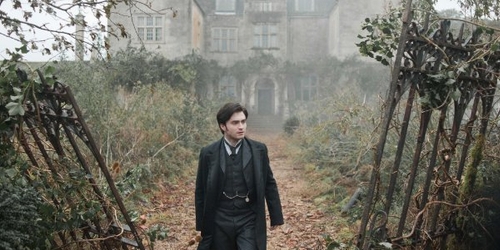
The great horror films know how to keep tension in the air and ratchet it up. Providing a quick cut and a sudden noise to scare an audience is not something earned. A sustained moment of suspense shows a mastery of the audience and film, and this is one area where The Woman In Black falls well short. While you might think the isolated locale may pay dividends in how Mr. Kipps can’t get back off the island at will, it’s never touched upon except in foreshadowing that never comes to fruition. Sure, he becomes creeped out at the house, but you never see him run to the edge of the island, hoping for escape, as cliche as that might sound. Again, all of this is despite a premise that is genuinely interesting and a great setting. Eel Marsh House is literally ripe with decay. Inside there are a myriad of dull, bruised tones, with dark burgundies and purples. The saturated look of the entire film oozes with a Tim Burton feel, and there seems to be no lack of eerie CGI fog.
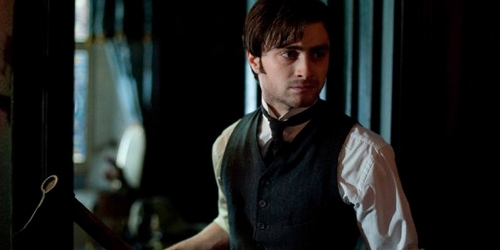
As for Radcliffe stepping out of the confines of the Potter franchise, he does the best he can with the limited dialogue he was given. Of course, because he is alone for long portions of the film, he has to act with his face more than his mouth. We are constantly given reverse over-the-shoulder shots where we can see behind him as things will blip in and out of the edge of the frame. And the film seems to have an odd fascination with one room upstairs in particular. As for the others, Hinds is predictably great. Any time he appears in a film he adds a sense of gravitas and doom, and he does great work as Arthur’s lone ally in the town. Meanwhile, McTeer is given a delightfully quirky role. Having lost her son at an early age, she now treats two small dogs as if they were kids, dressing them up and having them sit at the dinner table with a bib and high chairs.
G-S-T RULING:
While I derided the use of jump scares, I should note that there are some genuinely creepy moments within The Woman In Black. The issue is that they simply are too few and far between while consistently falling back on loud, sudden noises. When the first real thrill cropped up without a stinger (a sudden musical cue to let the audience know something is happening), I began to have high hopes. Oh, and is there anything worse than those old, creepy dolls that children used to play with? I have a feeling that’s why a toy chest was created: to simply put them out of sight at night. Radcliffe will certainly find life outside of the Potter franchise, but he should hope to put this film quickly in his rear view mirror and continue forward. The setting, story, and actors within couldn’t pull this out of the marsh it buried itself in.

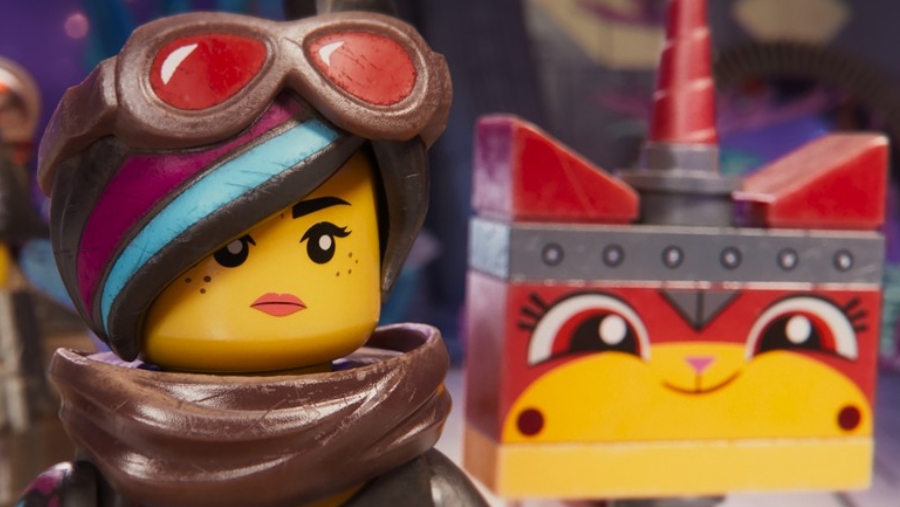
One Comment
Anonymous
It was effective for what it set out to do. I had no problem with the jump scares and thought Radcliffe did well in the role to distance himself from Potter. Not asking a whole lot up front I was very happy (and thoroughly creeped out) with this movie.